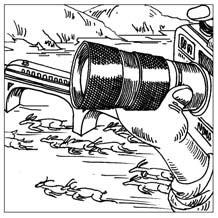Fake photos tarnish the news media
Updated: 2008-02-21 07:27
My husband and I once tried to remove a few electrical cables hanging over a beautiful bridge in a photograph that my husband took in Ottawa a decade ago. The miracle tool was none other than Photoshop.

A couple of hours later, we accomplished what we set out to do, but the touched-up bridge did not look any better than the original photograph.
After all, we were not, and still not, conversant with the wonder computer software. And I believe in my line of work, it is better to remain a little ignorant of the multiple imaging tools that Photoshop offers so as not to be enticed into committing such a mortal sin as distorting news photographs.
But sadly, some professional as well as amateur news photographers around the world have not been able to resist the temptation. The latest scandal involves a photographer working with the Daqing Evening News newspaper in the oil capital of Daqing, Heilongjiang province. He doctored two photographs he had taken and turned them into a composite of Tibetan antelopes crossing near a bridge on the Qinghai-Tibet Railway as a train passes.
He submitted his work in a news photograph competition held by CCTV, the national TV network, and won a prize.
Despite the initial failure at detection, the Daqing Evening News made the right decision on Monday to fire the photographer. The editor-in-chief of the newspaper also resigned.
While we support the paper's decision, we must also recognize the fact that the scandal has sent out a clear warning. It is not the first time the media has come across doctored or staged photographs.

Two years ago, the World Press Photo awarded a third prize to a photograph entitled Wedding During SARS. It featured a newly-wed couple crossing a street in Wuhan in their wedding outfits, and each wearing a mask.
Soon after the news of the award reached China, the "groom" in the photograph brought the photographer to court. He revealed that the "wedding" was staged and that he and the young woman in the photograph were actually models. The popularity of the photograph had done him much harm as he was in fact planning to get married.
Also a few years ago, I received from a freelancer several photographs showing how a major Siberian tiger-breeding center was thriving with dozens of the felines roaming on a snow-covered field. At once, my photographer colleagues warned me that they could be fakes. "No two tigers should look alike, but here some do," one of them said.
I believe many other media people must have had similar experiences. Last September, five of the country's websites for news photographs jointly declared they would refuse to accept photographs that had been digitally doctored. The websites required all contracted photographers follow professional ethics and maintain high standards.
It is believed that some photographers, familiar with the Tibet autonomous region and Tibetan antelopes, had doubts about the authenticity of the photograph during the screening process of the CCTV competition. However, apparently no one raised their doubts openly and let the photograph slip through.
What does that teach us? We should always be vigilant against fakes, and double-check for doctored news photographs.
E-mail: lixing@chinadaily.com.cn
(China Daily 02/21/2008 page8)
|
|
|
|
|
|